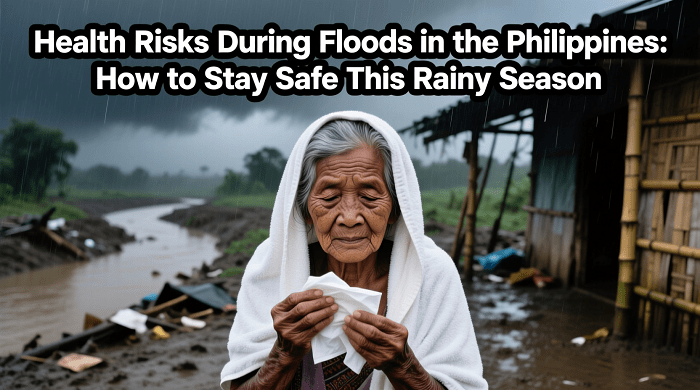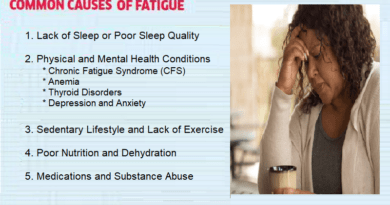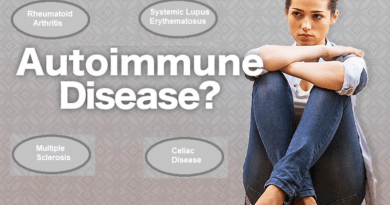Health Risks During Floods in the Philippines: How to Stay Safe This Rainy Season
Introduction
When the rainy season arrives in the Philippines, the nation faces a familiar challenge every year, health risks during floods in the Philippines. Heavy rains lead to widespread floods. From Metro Manila to the provinces, overflowing rivers and clogged drainage systems leave communities submerged. While floods disrupt daily life, the bigger and often unseen danger lies in the health risks during floods in the Philippines.
Floodwaters not only damage property but also carry bacteria, viruses, and parasites that can cause severe illnesses. With the growing threat of leptospirosis, dengue, cholera, and respiratory infections, understanding these risks and taking preventive action is vital to protect your family and community.
Why Floods Pose Serious Health Risks
Floods create the perfect environment for disease transmission. Stagnant water becomes breeding grounds for mosquitoes, while contaminated floodwater spreads harmful bacteria and viruses. The lack of clean water, poor sanitation, and overcrowded evacuation centers further worsen the situation.
In the Philippines, where floods are a seasonal reality, these health threats are not just temporary — they can lead to outbreaks and even fatalities if not properly managed. The Department of Health (DOH) consistently warns the public about post-flood diseases, but many remain unaware of how easily these infections can spread.
Below are the most common health risks Filipinos face during and after floods, and what you can do to prevent them.
1. Leptospirosis: A Silent Killer in Floodwaters
One of the most dangerous flood-related diseases is leptospirosis. It is caused by bacteria from the urine of infected animals, especially rats. Floodwater mixes with contaminated soil and waste. Bacteria can enter the body through open wounds and through small cuts in the skin. Last few weeks, we referred many cases to be hospitalized the PGH.
Symptoms:
- High fever
- Muscle pain (especially in the calves)
- Red eyes
- Headache
- Vomiting or abdominal pain
If left untreated, leptospirosis can lead to kidney failure, meningitis, or death.
Prevention Tips:
- Avoid wading in floodwaters whenever possible.
- If unavoidable, wear waterproof boots or plastic coverings.
- Clean and disinfect any wounds immediately after exposure.
- Visit a doctor if you experience symptoms within 10 days of contact with floodwater.
Learn more from the Department of Health’s advisory on leptospirosis.
2. Dengue Fever: The Rainy Season Mosquito Threat
Floods leave behind stagnant pools of water. These pools are the perfect breeding site for Aedes aegypti mosquitoes. They are the carrier of dengue fever. Dengue cases in the Philippines spike during the rainy season, and outbreaks are common after flooding events.
Symptoms:
- Sudden high fever
- Severe headache and joint pain
- Skin rashes
- Nausea or vomiting
Severe dengue can cause internal bleeding and requires immediate medical attention.
Prevention Tips (Based on DOH’s Campaign):
- Search and destroy mosquito breeding sites.
- Self-protect by using insect repellents and mosquito nets.
- Seek early consultation if symptoms appear.
- Say yes to fogging in outbreak areas.
Keep your surroundings dry and free of stagnant water to protect your household. You can also check out the World Health Organization Philippines for updated dengue data and safety guidelines.
3. Waterborne Diseases: Cholera, Typhoid, and Diarrhea
After floods, contaminated water supplies become a major issue. Drinking or using unsafe water can lead to waterborne infections as:
- Cholera – severe diarrhea and dehydration caused by Vibrio cholerae.
- Typhoid Fever – caused by Salmonella typhi, leading to high fever and abdominal pain.
- Acute Gastroenteritis – often due to viruses or bacteria in unclean water.
Symptoms:
- Diarrhea
- Fever
- Dehydration
- Abdominal cramps
Prevention Tips:
- Boil water for at least 3 minutes before drinking.
- Use water purification tablets when clean water isn’t available.
- Wash hands thoroughly before eating and after using the toilet.
- Avoid eating food from questionable or street sources after floods.
Maintaining safe drinking water is one of the most effective ways to prevent post-flood diseases.
4. Skin and Wound Infections
Prolonged exposure to dirty water can lead to fungal infections, dermatitis, and wounds that don’t heal properly. These skin problems are common in people who wade through floodwaters for extended periods.
Symptoms:
- Itching or rashes
- Redness and swelling
- Painful sores or abscesses
Prevention Tips:
- Wash skin thoroughly with clean water and mild soap after exposure.
- Keep feet and legs dry; change wet clothes quickly.
- Apply antiseptic on any cuts or scrapes.
Even minor wounds can lead to severe infections like cellulitis or sepsis if left untreated.
5. Respiratory Infections and Pneumonia
During floods, many people stay in crowded evacuation centers or damp homes. Poor ventilation and contact with mold and bacteria can lead to upper respiratory infections. These include colds, coughs, and even pneumonia.
Symptoms:
- Cough and cold
- Difficulty breathing
- Fever and body aches
Prevention Tips:
- Keep your living area as dry and clean as possible.
- Use masks in crowded shelters.
- Get vaccinated for influenza and pneumonia, especially for older people and children.
- Seek medical help early if breathing becomes difficult.
Other Health Risks to Watch Out For
Aside from the major diseases above, floods also increase the risk of:
- Tetanus, due to contaminated wounds
- Mental health issues, like stress and anxiety from displacement
- Injuries from debris or hidden hazards underwater
Preparedness means not just avoiding diseases, but ensuring overall well-being during disasters.
Post-Flood Hygiene and Safety Checklist
To protect yourself and your family after a flood:
✅ Use a bleach solution to disinfect all household surfaces. Mix 1 cup of bleach per gallon of water.
✅ Dispose of any food that has come in contact with floodwater.
✅ Wash and boil kitchen utensils before reuse.
✅ Wear gloves when cleaning up debris.
✅ Make sure children avoid playing near stagnant water.
Cleanliness and vigilance are your first lines of defense.
Government and Community Support
The Philippine Department of Health (DOH) and the Philippine Red Cross regularly launch health campaigns during the rainy season. These include medical missions, vaccination drives, and information programs on proper sanitation.
You can visit:
Staying informed and cooperating with local health authorities can save lives and prevent large-scale disease outbreaks.
Conclusion: Stay Safe and Proactive
Floods in the Philippines are inevitable, health risks during floods in the Philippines. But, flood-related illnesses don’t have to be. Filipinos can stay healthy even in the toughest rainy seasons. They can do this by understanding the health risks during floods. Practicing good hygiene and adopting preventive measures are also essential.
Health protection starts with awareness and immediate action. Don’t wait for symptoms to worsen — get checked and treated early.
📞 Call to Action
If you or your family experience fever, rashes, diarrhea, or other unusual symptoms after flood exposure, seek medical advice. Contact Helal Medical for consultation, diagnosis to stay healthy during and after the rainy season in the Philippines.




